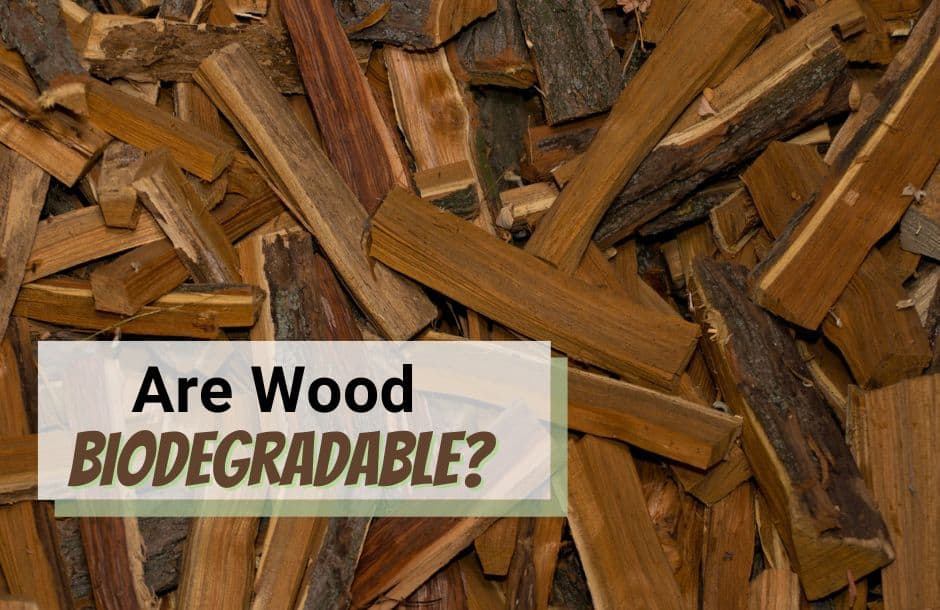Are woods biodegradable
Wood is a naturally occurring material that is composed of cellulose, lignin, and other organic compounds. It is a renewable resource that can be used to create a variety of products, including paper, furniture, and construction materials.
While wood is a renewable resource, it is not infinite. Trees take many years to grow, and once they are harvested, they cannot be replaced immediately. Additionally, wood is not always biodegradable. Certain types of wood, such as treated lumber, can take decades to decompose.
That said, wood is still an environmentally friendly material. It is a renewable resource that can be used to create a variety of products. Additionally, wood is biodegradable and will eventually decompose back into the earth.
Wood is a biodegradable material
Wood is a biodegradable material, meaning it can be broken down by living organisms, typically bacteria or fungi. The time it takes for wood to decompose varies depending on the type of wood, the environment it is in, and the amount of moisture present. Generally speaking, hardwoods take longer to decompose than softwoods.
Wood decomposition is important for the environment because it recycles nutrients back into the soil. When wood decomposes, it releases carbon dioxide, water, and minerals which act as a fertilizer for plants. This process helps to maintain healthy ecosystems and soil fertility.
While wood is a biodegradable material, it is not always the best choice for the environment. For example, if you were to build a deck out of wood, it would eventually decompose and need to be replaced. If you built the same deck out of recycled plastic, it would last much longer and not need to be replaced as often.
The process of wood biodegradation
Wood biodegradation is the breaking down of wood by fungi, bacteria, and other living organisms. Wood is made up of cellulose, lignin, and other organic compounds, which are broken down by these organisms into simpler molecules, such as carbon dioxide and water. The process of wood biodegradation is important in the recycling of wood and in the production of compost and other organic products.
The benefits of wood biodegradation
Wood biodegradation is the process by which wood is broken down by natural organisms. This process is important for the recycling of wood products and for the management of wood waste. Wood biodegradation can be beneficial for the environment because it can help to reduce the amount of waste that is sent to landfill. It can also help to improve the soil quality by providing nutrients for plants.
The challenges of wood biodegradation
Wood biodegradation is the breakdown of wood by microorganisms such as fungi. Wood is a complex material that is difficult for microorganisms to break down. The challenges of wood biodegradation include the presence of lignin, a complex polymer that makes up the cell walls of plants. Lignin is difficult to break down and often inhibits the growth of fungi. The other challenges of wood biodegradation include the presence of extractives, compounds that are toxic to microorganisms. Extractives can also inhibit the growth of fungi.
Are woods considered eco-friendly?
Most people view wood as an environmentally friendly building material because it is a natural product. Wood is a renewable resource since trees can be replanted, and it is also a recyclable material. However, the truth is that the manufacture and use of wood can have a significant environmental impact.
Wood is a popular building material because it is strong, durable, and relatively inexpensive. It is also a renewable resource, which is why many people believe it is environmentally friendly. However, the production of wood can have a significant impact on the environment.
The manufacture of wood involves the use of a number of toxic chemicals, including solvents, adhesives, and finishes. These chemicals can contaminate the air, water, and soil. In addition, the production of wood requires the use of energy, which can lead to the release of greenhouse gases.
Wood is also a recyclable material, but the recycling process can be difficult and expensive. In order to recycle wood, it must be separated into different types of materials, such as lumber, plywood, and veneer. It must also be cleaned and treated to remove any contaminants.
Despite the environmental impacts of wood production, the use of wood can still be considered environmentally friendly. Wood is a renewable resource, and it can be recycled and reused. In addition, the use of wood can contribute to the reduction of greenhouse gas emissions.
What Are the most common products made of wood?
Wood is a natural resource that is used to make a variety of products. Some of the most common products made of wood are furniture, flooring, paper and lumber.
Furniture is one of the most common items made of wood. Wood is a durable material that can be used to make chairs, tables, beds, and other items. Wood can also be stained or painted to match a person’s style.
Flooring is another common product that is made of wood. Wood flooring is durable and can last for many years. Wood flooring also comes in a variety of colors and styles.
Paper is made of wood because it is absorbent and can be bleached to produce different colors.
Lumber is another common product that is made of wood. Lumber is used to build houses, decks, and other structures. Lumber can also be used to create products such as furniture and flooring.

